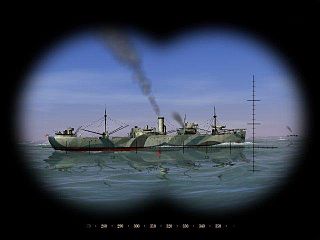
A submarine simulator is a video game in which the player commands a submarine. The usual form of the game is to go on a series of missions, each of which features a number of encounters where the goal is to sink surface ships and to survive counterattacks by destroyers. Submarine simulators are notable for the highly-variable pace of the game; it may take hours of simulated time to get into position to attack a well-defended convoy, and sub simulators typically include an option for players to adjust the ratio of real time to simulated time up and down as desired.
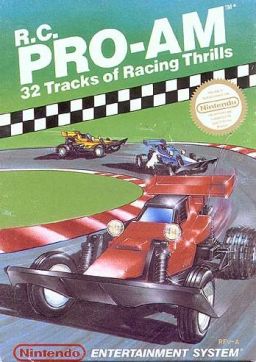
R.C. Pro-Am is a racing video game developed by Rare and published by Nintendo for the Nintendo Entertainment System. It was released in North America in February 1988, and then in Europe on April 15. Presented in an overhead isometric perspective, a single player races a radio-controlled car around a series of tracks in vehicular combat. Each track qualifies its top three racers for the next track. Collectible power-up items improve performance, hazards include rain puddles and oil slicks, and missiles and bombs can temporarily disable opponents. Originally titled Pro Am Racing, it was ported to the Sega Genesis in 1992 as Championship Pro-Am, an enhanced remake with enhanced graphics and additional features. R.C. Pro-Am spawned two sequels: Super R.C. Pro-Am in 1991, and R.C. Pro-Am II in 1992.

Donkey Kong Jr. is a 1982 arcade platform game that was released by Nintendo. It is the sequel to Donkey Kong, but with the roles reversed compared to its predecessor: Mario is now the villain and Donkey Kong Jr. is trying to save his kidnapped father. It first released in arcades and, over the course of the decade, was released for a variety of home platforms. The game's title is written out as Donkey Kong Junior in the North American arcade version and various conversions to non-Nintendo systems.

Gumshoe is a light gun shooter video game developed and published by Nintendo for the VS. System arcade hardware and the Nintendo Entertainment System console. It was released in 1986 in North America and in 1988 in Europe. Unusual for a Nintendo game, it was not released in Japan. It was designed by Yoshio Sakamoto.

Contra Force is an run and gun game released by Konami for the Nintendo Entertainment System in 1992 in North America. It is a spinoff of the Contra series, being the third game in the series released for the NES following the original Contra and Super Contra. However, the game's plot and setting are unrelated to both previous and succeeding entries, as the villains in the game are human terrorists instead of an alien menace. The game was scheduled to be released in Japan under the title of Arc Hound, with no ties to the Contra series, but was cancelled.

Dig Dug II is an action arcade video game developed and published in Japan by Namco in 1985. It is a sequel to 1982's Dig Dug. Pookas and fire-breathing Fygars return as the enemies, but the side view tunneling of the original is replaced with an overhead view of an island maze.
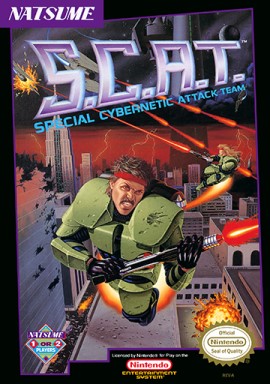
S.C.A.T.: Special Cybernetic Attack Team, also known as Final Mission in Japan and Action in New York in Europe, is a science fiction side-view shoot-'em-up produced by Natsume for the Nintendo Entertainment System. Within PAL-A regions, the game was only released in the UK. It was released in Japan in 1990, in North America in 1991, and in the PAL region in 1992. It was also later released on the Virtual Console in the PAL region on February 4, 2011, and in North America on February 7 for the Wii and in the PAL region on December 4, 2014 for the Nintendo 3DS and Wii U and was released on the Nintendo Switch via the Nintendo Switch Online service on September 23, 2020.
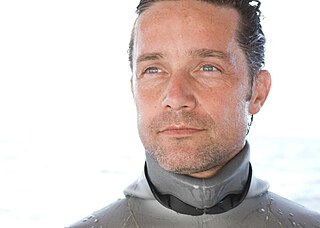
Fabien Cousteau is an aquanaut, ocean conservationist, and documentary filmmaker. As the first grandson of Jacques Cousteau, Fabien spent his early years aboard his grandfather's ships Calypso and Alcyone, and learned how to scuba dive on his fourth birthday. From 2000 to 2002, he was Explorer-at-Large for National Geographic and collaborated on a television special aimed at changing public attitudes about sharks called "Attack of the Mystery Shark". From 2003 to 2006, he produced the documentary "Mind of a Demon" that aired on CBS. With the help of a large crew, he created a 14-foot, 1,200-pound, lifelike shark submarine called "Troy" that enabled him to immerse himself inside the shark world.

Barbie: Game Girl is a 2D platform game released in 1992 for the Game Boy based on the Barbie doll franchise.
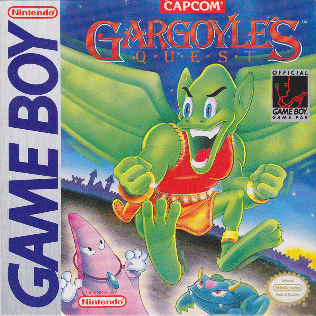
Gargoyle's Quest is an action-adventure platform game developed by Capcom for the Game Boy and released in 1990. It is a spin-off of the Ghosts 'n Goblins series, featuring the series antagonist character Firebrand as the main playable character. Gargoyle's Quest was followed by the NES prequel Gargoyle's Quest II in 1992 and the Super NES sequel Demon's Crest in 1994.

Jaws Unleashed is a 2006 action-adventure video game inspired by the 1975 film Jaws. It was developed by Appaloosa Interactive and published by Majesco Entertainment. This game features open world gameplay, with the player assuming control of a large great white shark and being able to roam freely throughout the water, eating other animals and humans, while destroying everything in its path. Jaws Unleashed was released for Microsoft Windows, Xbox and PlayStation 2.
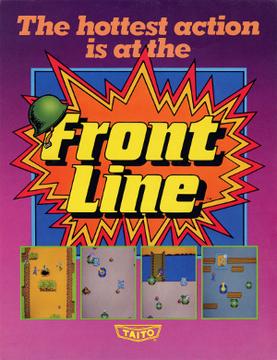
Front Line is a military-themed run and gun video game released by Taito for arcades in November 1982. It was one of the first overhead run and gun games, a precursor to many similarly-themed games of the mid-to-late 1980s. Front Line is controlled with a joystick, a single button, and a rotary dial that can be pushed in like a button. The single button is used to throw grenades and to enter and exit tanks, while the rotary dial aims and fires the player's gun.

Jaws is an American thriller film series that started with a 1975 film that expanded into three sequels, a theme park ride, and other tie-in merchandise, based on a 1974 novel. The main subject of the saga is a great white shark and its attacks on people in specific areas of the United States and The Bahamas. The Brody family is featured in all of the films as the primary antithesis to the shark. The original film was based on a novel written by Peter Benchley, which itself was inspired by the Jersey Shore shark attacks of 1916. Benchley adapted his novel, along with help from Carl Gottlieb and Howard Sackler, into the 1975 film Jaws, which was directed by Steven Spielberg. Although Gottlieb went on to pen two of the three sequels, neither Benchley nor Spielberg returned to the film series in any capacity.
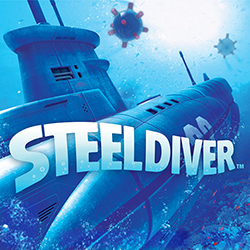
Steel Diver is a submarine simulation video game developed and published by Nintendo, with assistance by Vitei, for the Nintendo 3DS. The game was released in March 2011 as a launch title for the 3DS in North America, with releases in Europe, Australia, and Japan, coming in May the same year. In the game, the player controls a submarine via a set of touch-screen based levers and wheels.
The Undersea Adventures of Captain Nemo is a Canadian animated television series of five-minute cartoons produced in 1975 by Rainbow Animation in Toronto, Ontario. The series follows the underwater adventures of Captain Mark Nemo and his two young assistants, Christine and Robbie, in their nuclear-powered submarine, the Nautilus.

Super Contra, known as Super Contra: The Alien Strikes Back in Japan, is a run and gun video game by Konami, originally released as a coin-operated arcade video game in January 1988. It is the sequel to the original Contra and part of the Contra series. The game stars Bill Rizer and Lance Bean as they are sent to thwart another alien invasion from the vicious Red Falcon.
Representations of the shark are common in popular culture in the Western world, with a range of media generally portraying them of eating machines and threats. In some media, however, comedy is drawn from portrayals of sharks running counter to their popular image, with shark characters being portrayed as unexpectedly friendly or otherwise comical. The lists below give an approximate sample of the many forms of representation of the shark in popular culture.
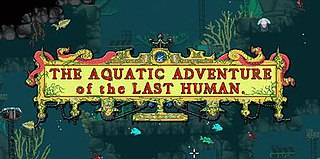
The Aquatic Adventure of the Last Human is a 2D metroidvania action-adventure video game. Developed by YCJY, the game was released for Microsoft Windows, OS X and Linux in January 2016. Ports for Xbox One and PlayStation 4, developed by Stage Clear Studios, were released in January 2018, followed by a Nintendo Switch port in January 2019.
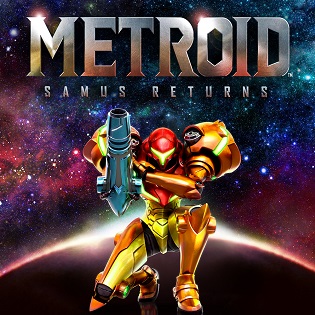
Metroid: Samus Returns is a 2017 action-adventure game developed by MercurySteam and Nintendo EPD and published by Nintendo for the Nintendo 3DS handheld game console. It is a remake of the 1991 Game Boy game Metroid II: Return of Samus. Players control series protagonist Samus Aran, a bounty hunter who is contracted by the Galactic Federation to exterminate the parasitic Metroid species on their home planet of SR388. While the story and structure parallel the original game, Samus Returns features redone graphics, updated controls and user interface, and new gameplay mechanics not seen in previous 2D Metroid titles, such as a melee counterattack and the ability to aim freely at any angle.

Maneater is an action role-playing game developed and published by Tripwire Interactive. The player assumes control of a female bull shark who must evolve and survive in an open world so she can take revenge on a fisherman who disfigured her as a pup and killed her mother.



















